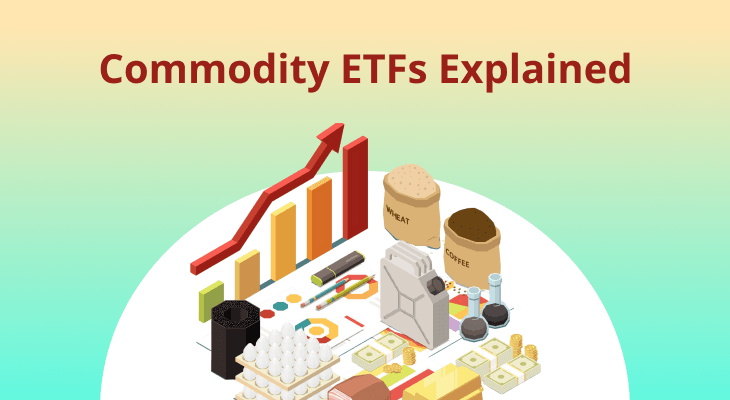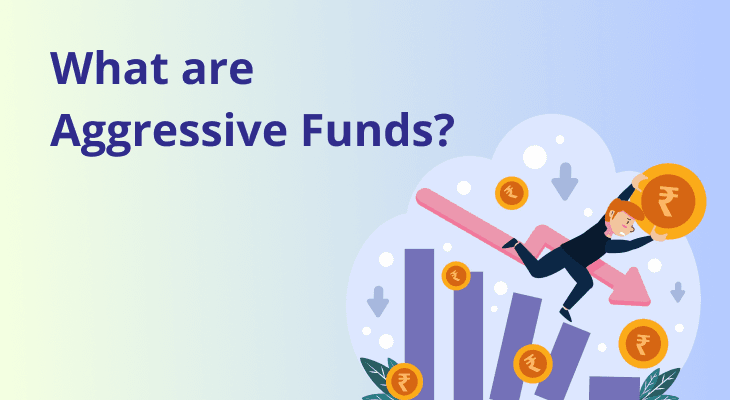
5 Ways To Reduce Mutual Fund Risk
Mutual funds offer a great way to invest in the stock market with professional management, but they also come with risks. Market fluctuations, interest rate changes, and sectoral downturns can impact returns. However, you can minimise risk without compromising growth potential by adopting smart investment strategies.
Here are five effective ways to reduce mutual fund risk, whether you're a new investor or looking to fine-tune your portfolio.
1. Diversify Your Portfolio
Diversification is a core principle of risk management in investing. Although mutual funds provide automatic diversification by pooling money into a variety of securities, you can further reduce risk by diversifying across different types of funds, asset classes, and geographies.
The goal is to avoid overexposure to a single stock, sector, or market event that could negatively impact returns. A well-diversified portfolio ensures that a downturn in one area does not significantly drag down overall performance, offering stability even in volatile markets.
How to Diversify Effectively?
- Invest across asset classes: Combining equity, debt, and hybrid mutual funds can help balance risk and returns.
- Choose funds with different strategies: Large-cap, mid-cap, small-cap, and international funds offer various levels of risk and return potential.
- Sector diversification: Avoid overexposure to a single sector (e.g., banking or technology) to reduce concentration risk.
Example: If you hold only equity mutual funds and the stock market goes through a bear phase, your entire portfolio will take a hit. However, if you also have debt funds and gold ETFs, these investments may act as a buffer, reducing overall losses.
2. Choose Funds With Low Expense Ratios
Expense ratios represent the annual management fees charged by the fund house and directly impact your returns. A high-cost mutual fund must generate additional returns just to offset its higher fees, which can be challenging, especially in low-growth or sideways markets. Even a seemingly small difference in expense ratios can compound over time, leading to significant variations in final returns.
Choosing funds with lower costs, such as index funds or passively managed funds, helps investors keep more of their returns, making their investments more efficient and cost-effective.
Why Do Low Expense Ratios Matter?
- Actively managed funds often have higher expense ratios (1-2%) due to frequent trading and research efforts.
- Index funds and passive funds have lower expense ratios (0.1-0.5%) since they track market indices without active management.
- Lower costs mean more of the returns stay with you, reducing the risk of underperformance due to high fees.
Example: If an investor puts ₹ 10 lakh into a mutual fund with a 2% expense ratio, they pay ₹ 20,000 annually in fees. If another fund with a 0.5% expense ratio delivers the same returns, they would pay only ₹ 5,000, leading to higher long-term gains.
3. Invest in Funds With a Long Track Record
Although a mutual fund’s past performance does not guarantee future returns, its historical performance can provide insight into how well the scheme can it manages risk and delivers returns over different market cycles. Funds that have been around for at least 10-15 years and have successfully navigated economic downturns are more likely to continue performing well under different conditions.
You should not only look at past returns but also assess how consistently the fund has generated returns relative to market fluctuations. A long track record helps build confidence that the fund manager has the expertise to handle various economic scenarios.
What to Look For?
- Funds that have performed well across different market cycles (bull and bear markets).
- Fund managers with a proven history of delivering risk-adjusted returns.
- Funds that maintain a consistent investment strategy rather than frequently shifting allocations.
Example: Suppose an investor is choosing between two funds – Fund A has 15 years of performance data and has delivered steady returns across various market cycles. Fund B was launched only two years ago and has seen extreme fluctuations. Choosing Fund A may offer more stability, as its long-term performance suggests that it can handle market volatility better.
4. Monitor Market Conditions
Market movements, economic trends, and policy changes can significantly impact mutual fund performance. Being aware of these factors allows investors to adjust their strategies accordingly and avoid unnecessary losses. Factors such as interest rate hikes, inflation trends, geopolitical events, and industry shifts can create volatility.
Investors who actively track economic indicators and market sentiment can make informed decisions, such as reallocating assets when needed or avoiding investments that may be negatively impacted by market downturns.
How to Stay Informed?
- Keep track of market trends, economic news, and interest rate movements.
- Understand sectoral impacts—for example, rising interest rates often negatively impact debt funds.
- Observe government policies and global events that could affect fund performance.
Example: During the COVID-19 pandemic, equity mutual funds faced extreme volatility, while gold and debt funds performed relatively better. Investors who monitored market conditions and shifted some capital into safer assets experienced lower losses than those who remained fully invested in equities.
5. Regularly Review and Rebalance Your Portfolio
Over time, a portfolio can drift from its original allocation due to market fluctuations. A well-balanced portfolio today may become riskier than intended if high-growth assets outperform and take up a larger share. Regular reviews ensure that investors stay aligned with their risk tolerance, financial goals, and market conditions. Rebalancing can involve shifting profits from overperforming funds to underperforming but stable investments, reducing risk exposure while maintaining overall growth potential.
You should periodically reassess your asset allocation, especially during major life events or changing financial goals.
Why is Rebalancing Important?
- Helps maintain the desired equity-debt ratio (e.g., 60% equity, 40% debt).
- Reduces exposure to overperforming assets that may become risky.
- Ensures low-risk mutual funds remain a part of the portfolio for stability.
How Often Should You Rebalance?
- At least once a year or after major market movements.
- When risk levels exceed personal tolerance (e.g., too much exposure to equities in a market boom).
- If financial goals change, such as moving closer to retirement and needing safer investments.
Example: Suppose an investor’s portfolio starts with 70% equity and 30% debt. After a market rally, the equity component rises to 85%. If they do not rebalance, they face higher risk in case of a downturn. By shifting back to 70-30, they maintain a balanced risk profile.
Other Ways to Reduce Mutual Fund Risk
Here are some additional strategies to manage risk in mutual fund investments:
- Invest in Debt-Oriented or Hybrid Funds – If you have a low-risk appetite, consider debt or hybrid funds, which offer stability and lower volatility compared to pure equity funds.
- Opt for Systematic Investment Plans (SIPs) – SIPs help reduce market timing risk by averaging out purchase costs over time, ensuring disciplined investing.
- Understand Exit Loads and Lock-In Periods – Some funds charge exit loads if redeemed too soon. Knowing these costs can help avoid reduction in net returns.
- Maintain an Emergency Fund – Having a separate emergency fund prevents the need to redeem mutual fund investments during market downturns, allowing them to recover.
- Consider Tax Efficiency – Selecting tax-efficient funds like ELSS can reduce tax burdens while offering potential long-term growth.
These additional measures, combined with the core strategies mentioned earlier, can help create a balanced and risk-managed mutual fund portfolio.
Conclusion
Reducing mutual fund risk requires careful planning and continuous monitoring. By diversifying investments, choosing low-cost funds, investing in proven performers, staying updated on market conditions, and rebalancing regularly, investors can lower risk while maximising returns. For those seeking low-risk mutual funds, debt funds, balanced funds, and index funds can provide stability. However, every investor should tailor their portfolio based on financial goals and risk tolerance.
By following these five strategies, you can navigate mutual fund investments with greater confidence and security.
SIPs let you invest small amounts regularly, making it easier to stay consistent with your goals. With time, your money grows faster through compounding, helping you get the most out of your investments. Try our SIP Calculator to see how your money can grow and make smarter plans for your future
FAQ
How does diversification help reduce mutual fund risk?
Diversification spreads investments across multiple asset classes, sectors, and geographies, reducing the impact of a single underperforming asset on the overall portfolio. This helps balance risk and improves long-term stability.
Why should I choose mutual funds with low expense ratios?
Lower expense ratios mean fewer management fees, allowing you to retain more of your returns. Over time, even small differences in expense ratios can lead to significant variations in final earnings.
How do I know if a mutual fund has a long track record?
Check the fund’s performance history over at least 10-15 years. Funds with consistent returns through different market conditions indicate strong management and better risk control.
How often should I monitor market conditions when investing in mutual funds?
It’s advisable to review market conditions at least quarterly or during significant economic events. Regular tracking helps in making informed decisions and adjusting investments accordingly.
What does portfolio rebalancing mean, and why is it important?
Portfolio rebalancing involves adjusting asset allocation to maintain the desired risk level. If one asset class grows significantly, rebalancing ensures the portfolio doesn’t become overly risky.
Can investing in index funds help reduce risk?
Yes, index funds typically have lower costs and track market performance without active management. They offer diversification and lower volatility, making them a safer option for long-term investors.
Should I invest in multiple mutual fund types to reduce risk?
Yes, spreading investments across equity, debt, and hybrid funds can balance risk and returns. A mix of growth and stable funds creates a more resilient portfolio.
How do market conditions affect mutual fund performance?
Economic factors like inflation, interest rates, and global events can impact mutual fund returns. Staying informed allows you to make strategic adjustments to minimize losses.
Is it risky to invest in mutual funds for the long term?
While mutual funds carry some risk, long-term investments generally reduce volatility. Staying invested through market cycles helps smooth out short-term fluctuations.
What should I do if my mutual fund underperforms?
If a fund consistently underperforms over several years, review its strategy, management, and market conditions. If necessary, reallocate your investment to better-performing funds.


